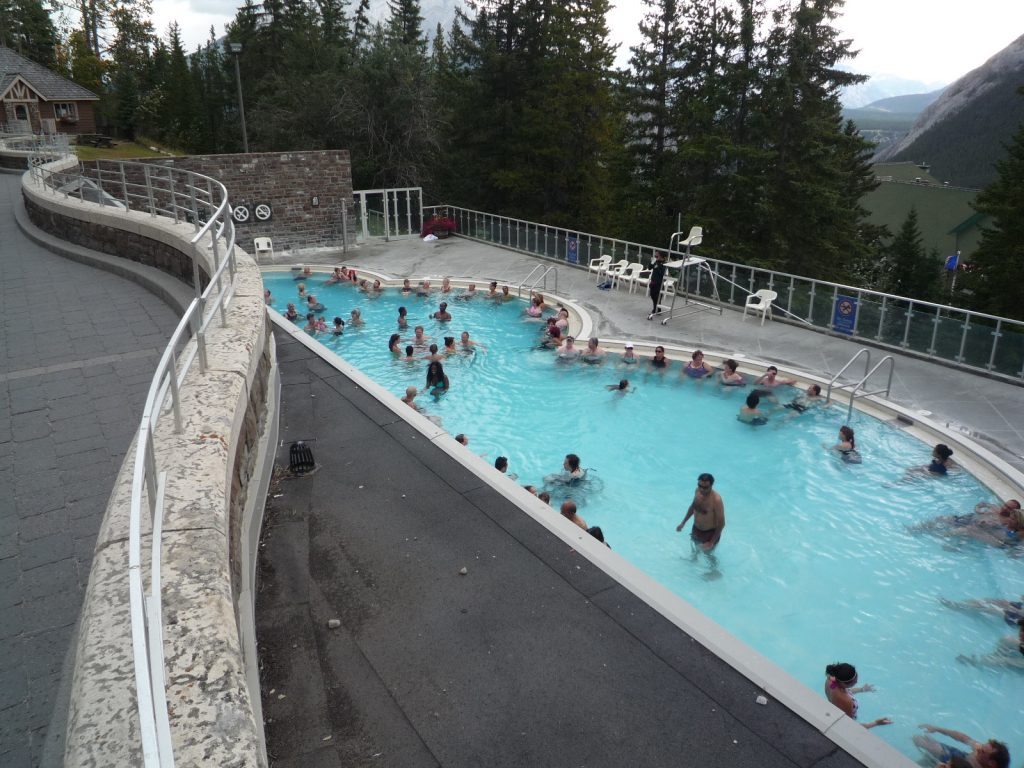You’ll probably find the scenery so jaw-dropping that you won’t need any encouragement to stop and enjoy some of the things to do in Banff National Park. Get started with five of our favorite stops.
From the south, get there via the Canadian Rockies Route, which starts in Coeur d’Alene, Idaho, and ends with a drive through the heart of Banff and Jasper national parks. Banff is the flagship of Canada’s national park system and sees over three million visitors during an average year. If you’re planning to stay in the park we recommend making reservations in advance.
The scenic stretch of Canada Highway 93 through Banff and Jasper is known as Icefields Parkway. It has a toll, but is open to all recreational vehicles and buses. There are restrictions for commercial moving trucks, including U-Hauls.
Banff and Lake Louise
Banff and Lake Louise are both cozy communities that serve as ski havens in winter and adventure destinations in summer.
There are more shopping and dining options in Banff. Stroll along Banff Avenue and drop in the local shops. Take a walk along the Bow River trail in Banff and take photos at Bow Falls.
Try the sightseeing gondola at Lake Louise and keep your eyes peeled for wildlife. Stop in the wildlife interpretive center mid-mountain to learn about what you saw.
Banff Upper Hot Springs
These hot springs are a short drive from the town of Banff on the side of Sulphur Mountain. Water in the springs bubble to the surface from 1.8 miles deep in the crust. The temperature of the spring water varies through the year and can reach 116 degrees Fahrenheit in the winter. The hot springs are open late, year round.
Moraine Lake
The waters of this glacial lake are famous for being a vivid turquoise. Light reflecting off particles of glacial rock flour gives the lake its hue. The intense color and water level both peak in late June, but the lake is stunning any time of year. The lake is nestled at the bottom of the Valley of Ten Peak and is surrounded by steep craggy mountains, rock slides, and evergreen forest.
Sit lakeside and enjoy the view, go for a hike along one of the nearby trails, or paddle a canoe onto a lake and immersive yourself in the surroundings.
The road to Moraine Lake is closed in winter due to heavy snowfall and high avalanche risk.
Columbia Icefield

The Columbia Icefield is the largest mass of ice in the Rocky Mountains. It sits atop a triple continental divide and feeds six glaciers, three of which are visible from the roadway.
The Athabasca Glacier is the most popular and accessible. The glacier has been receding for the last 125 years. It’s lost nearly half its volume and retreated nearly a mile, but is still an impressive sight. It’s nearly four miles long and between 300 and 980 feet thick. Guided tours take visitors on to the glacier.
Weeping Wall
There’s a paved parking area at the viewpoint for this incredible natural wonder. The cliffs of Cirrus Mountain, which are 330 feet high, can have several waterfalls streaming down its face at once. Water melting from the snowfields high above these cliffs finds its way through cracks in the rock and emerges as a series of beautiful waterfalls. The main fall is called Teardrop.




Comments are closed.